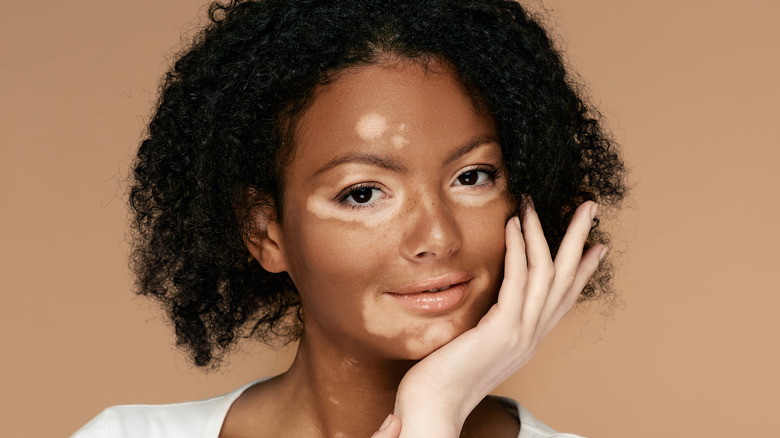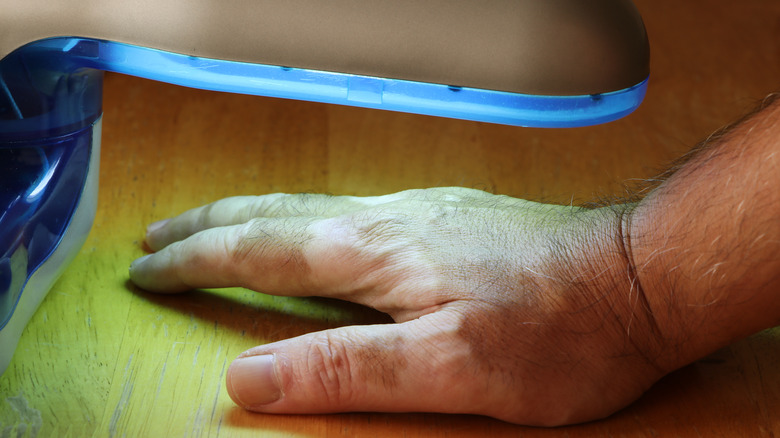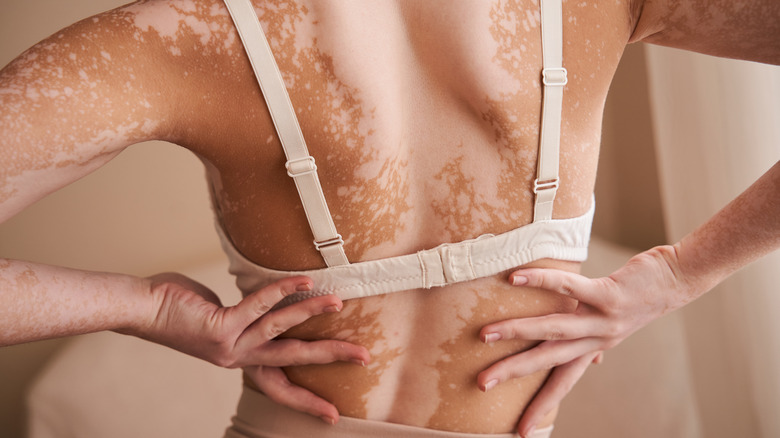The Top 8 Ways To Treat Vitiligo Effectively
Looking for the best ways to treat vitiligo? While there is no cure for this disorder, you can keep it under control and even out your skin tone. Young people have the highest chance to regain their skin color, says the Cleveland Clinic. Unfortunately, treatment is less effective in those who develop the disease later in life.
This autoimmune disorder affects 0.5 to 2% of people worldwide, reports a 2020 review published in the journal Dermatology. It's characterized by white patches, or maculas, and affects both men and women. Vitiligo can occur at any age, but it's more common in children and young adults under 30 years old. Its exact cause is unknown. Researchers believe that it may be due to oxidative stress, genetics, stress, or immune factors. In general, its symptoms progress gradually and tend to affect the hands, arms, lips, and other skin areas exposed to the sun, notes the Global Vitiligo Foundation.
Contrary to what you may have heard, vitiligo is more than just a cosmetic problem. This skin condition may increase your risk of developing diabetes, alopecia areata, and other autoimmune diseases, warns the Cleveland Clinic. On top of that, it can affect your self-esteem and contribute to anxiety or depression. Adequate treatment may help improve your symptoms, but the results are unpredictable. With that being said, let's take a closer look at the most effective ways to treat vitiligo.
Repigmentation therapies may help restore your skin color
If you have vitiligo, your doctor may prescribe corticosteroids, topical vitamin D analogs, or immunomodulators. These therapies can restore skin color by suppressing the immune response. Corticosteroids, for example, help reduce localized vitiligo and may work even better when combined with light therapy (per Open Access Macedonian Journal of Medical Sciences). The downside is that they may cause dermal scarring, skin thinning, excessive hair growth, spider veins, and other adverse reactions in the long run.
As far as light therapy goes, this form of treatment appears to be particularly effective for generalized vitiligo. It works by stimulating the activity of melanocytes, a class of cells that produce the skin-darkening pigment melanin (via Open Access Macedonian Journal of Medical Sciences). These cells also protect your skin from ultraviolet rays, according to the American Type Culture Collection. Topical vitamin D analogs, on the other hand, modulate the immune response, melanocyte maturation, and other processes, explains Medscape. These creams and ointments are typically used in conjunction with corticosteroids or light therapy.
Unfortunately, none of these treatments have permanent results. Approximately 40% of the treated areas begin to fade in color within one year, reports a 2015 study published in NEJM Journal Watch. Researchers suggest using a topical drug called tacrolimus ointment 0.1% to maintain the results of your treatment. More studies are needed to validate its clinical effects.
Patients with stable vitiligo may benefit from surgery
Repigmentation surgery appears to be one of the best ways to treat vitiligo, especially in patients with stable lesions. Several types of procedures exist, including but not limited to minigrafting, split-skin grafting, and epidermal grafting. Choosing one over another depends on the patient's age, skin type, size of lesions, and other factors. Generally, surgical treatment works best for adults with stable vitiligo. About 77–83% of patients achieve good to excellent results in the years following the procedure (per Expert Review of Dermatology).
Minigrafting, for example, can improve the symptoms of localized vitiligo. In some clinical trials, patients who underwent this procedure achieved 90–100% repigmentation (via Expert Review of Dermatology). Another option is epidermal grafting, a procedure that doesn't leave scars. This type of surgery is suitable for small areas, such as the hands or lips. Split-skin grafting, on the other hand, allows surgeons to treat large areas at once. It also has the highest success rate of all procedures.
It's important to keep in mind that most procedures carry a high risk of complications ranging from infection and scarring to graft rejection. A safer option is to take Ginkgo biloba, vitamin C, alpha-lipoic acid, and other supplements, but more research is needed to confirm their efficacy. The same goes for vitamin B12 and phototherapy, points out the Mayo Clinic. However, your dermatologist is the only one who can recommend the best ways to treat vitiligo.


